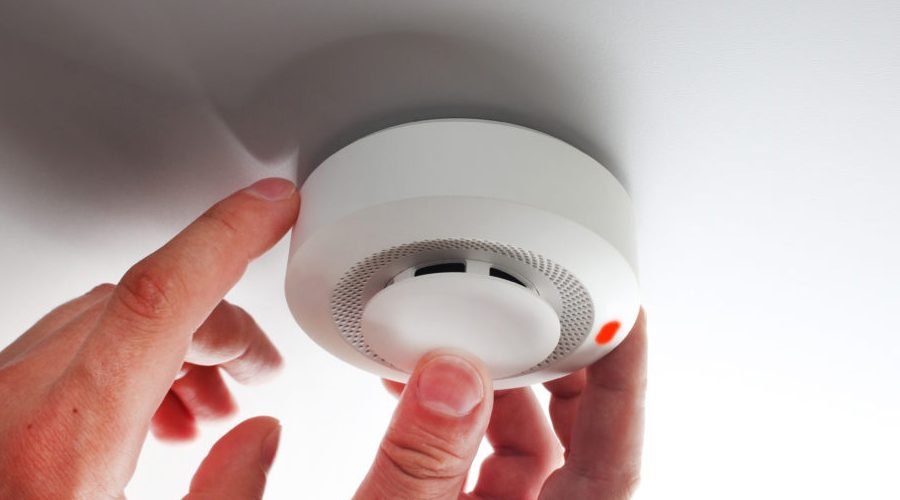When it comes to keeping our homes and families safe, few things are more critical than a reliable smoke detector. In this engaging article, we’ll walk you through the fascinating history of smoke detectors, how they’ve evolved over time and the cutting-edge advancements that are shaping the future of these life-saving devices, including the introduction of 10-year smoke detectors. These long-lasting detectors offer improved safety and convenience, ensuring that our homes remain protected with minimal maintenance.
Table of Contents
The Early Beginnings
Fire Alarms in the 19th Century
Let’s take a trip back in time to before smoke detectors were even a thing. Fire alarms were the go-to way to alert people of a potential fire. These early fire alarms were pretty basic – think bells or whistles. While they were helpful, they were far from the sophisticated devices we have today.
The Invention of the Smoke Detector
Fast forward to 1902, and we have George Andrew Darby to thank for inventing the first smoke detector. His patented device could detect smoke and send an electrical signal to a remote alarm. But it wasn’t until the 1960s that affordable and reliable smoke detectors became accessible for everyday folks to use in their homes.
The Ionization Smoke Detector
One of the first types of detectors to gain widespread popularity was the ionization smoke detector. This clever device uses a tiny bit of radioactive material to detect smoke particles in the air.
How Ionization Detectors Work
Imagine a little chamber containing two electrically charged plates and a small amount of radioactive material. When smoke enters this chamber, the particles ionize the air, messing with the electric current between the plates. This disruption sets off the alarm, alerting you to the presence of smoke.
Pros and Cons of Ionization Detectors
These detectors are super sensitive to small, fast-burning fires and generally easier on the wallet than other types. But there’s a catch – they’re more likely to cause false alarms from everyday activities like cooking or steamy showers. Plus, they don’t do as great a job at detecting slow, smoldering fires.
The Photoelectric Smoke Detector
Enter the photoelectric smoke detector – another common type of detector you’ll find in homes today. This innovative device uses a beam of light to detect smoke.
How Photoelectric Detectors Work
Picture a chamber containing a light source and a light-sensitive sensor. When smoke enters this chamber, it scatters the light, causing some of it to hit the sensor. If the sensor detects a significant change in light, it triggers the alarm, warning you of the smoke.
Pros and Cons of Photoelectric Detectors
Photoelectric detectors are champs at detecting slow, smoldering fires and are less prone to those pesky false alarms from cooking or steam. However, they might not be as sensitive to fast-burning fires, and they can be a bit pricier than ionization detectors.
10-Year Smoke Detectors
Ready for a game-changer? Introducing the 10-year smoke detector. These detectors come with long-lasting lithium batteries that last the entire life of the device, so you can say goodbye to frequent battery replacements. With a sealed battery compartment, these detectors ensure the battery stays tamper-proof and performs at its best throughout its lifespan.
Combination Smoke and Carbon Monoxide Detectors
Another fantastic innovation in smoke detector technology is the combo detector, which can detect both smoke and carbon monoxide (CO). Since CO is a deadly, odorless, and colorless gas, having a single device that can sense both smoke and CO is a huge win for home safety.
Smart Smoke Detectors
As technology continues to advance, we now have smart smoke detectors on the scene. These nifty devices offer a range of features that not only enhance protection but also add convenience to our lives.
Features and Benefits
By connecting to your home’s Wi-Fi network, smart smoke detectors send notifications straight to your smartphone if the alarm is triggered. Some models even offer voice alerts that inform you of the specific location of the detected hazard. Plus, many smart detectors come with self-testing capabilities, giving you peace of mind that your device is always in tip-top shape.
Integration with Home Automation Systems
What’s even cooler about smart smoke detectors is their ability to integrate with home automation systems. This seamless integration allows you to control and monitor all your devices through a single platform. With alerts and notifications from various devices, such as security cameras and smart doorbells, you can enjoy a comprehensive approach to home safety.
Conclusion
From the humble beginnings of fire alarms to the high-tech smart smoke detectors of today, the history of smoke detectors shows our unwavering dedication to fire safety. As technology continues to progress, we can expect even more improvements in smoke and hazard detection, ultimately helping to make our homes and families safer.





